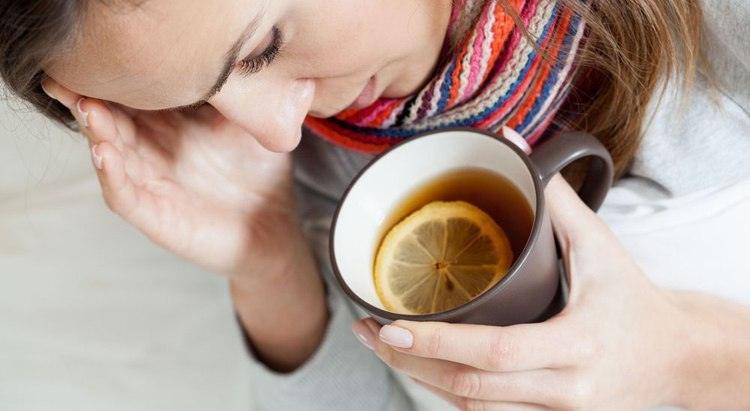If you associate the temperature that has risen sharply during breastfeeding with breast problems, it can be noted:
- lactostasis;
- mastitis at any stage;
- errors in temperature measurement (thermometry).
When thermometry pain syndrome and pathological discharge from the mammary glands is not observed. There are also no signs of a runny nose or cough. The temperature rises to 37 C and is constantly in this limit. This condition is considered normal, since when the ducts are filled, the temperature always increases. When the breasts are empty, the temperature returns to normal.
To prevent nursing mothers from attributing to themselves a feverish fever by measuring the temperature under the armpit, they are advised to take measurements rectally, orally or in the elbow bend.
If the mother's temperature rises to 39-40 C due to a viral infection, this indicates inflammation that requires urgent medical attention. Chronic pathologies during breastfeeding are also exacerbated, and not necessarily due to pathogenic viruses. These can be diseases of the thyroid gland, nervous system, and digestive organs.
Endometritis that develops after infection of a wound from a cesarean section, or other septic pathologies, often cause an increased temperature.
Sore throat during hepatitis B can also cause a rise in temperature -
Lactostasis
Sometimes lactostasis (or milk retention) is the cause of a fever that rises during breastfeeding. The disorder occurs when the ducts are stagnant. Breast milk has a natural property to raise the temperature in the event of injury, stagnation, or damage to the ducts. If the glands are not released, and staphylococcus was introduced through the nipple, doctors call this type of lactostasis the latent stage of mastitis, which causes severe inflammation.
Causes of lactostasis causing temperature:
- unnecessarily, provoking the accumulation of milk in large volumes that the baby does not need.
- Abnormal nipple structure (flat and inverted).
- Sagging breasts.
- Irregular attachment, incorrect feeding regimen (strictly by the hour, not on demand) -.
- Injuries to the chest.
- Using tight underwear that squeezes the glands.
With stagnant milk, the breast greatly increases in size, seals are felt, the temperature rises (up to 40 C). Obvious redness, swelling of the glands with lactostasis is not observed. As soon as the breast is free of the accumulated milk portion, fever and soreness disappear without medical attention.
So that the temperature does not rise and lactostasis does not develop, the baby should be fed at 1.5-2 hour intervals. Night feeds are especially valuable. With milk stagnation, you can express a little and. If the problem occurs regularly, therapeutic treatment is possible. It consists in taking medications aimed at suppressing hyperlactation.
Mastitis
This is an inflammation of the mammary glands that develops with breastfeeding. Mastitis is considered an unpleasant and common problem during this period.
There are many risk factors in which mastitis develops and the temperature rises strongly:
- nipple injuries;
- neglected lactostasis;
- lowered immunity;
- non-compliance with hygiene rules;
- chronic diseases, etc.
The onset of inflammation is caused by the ingress of streptococcal and staphylococcal bacteria into the glands through wounds and microcracks on the nipples.
Mastitis is divided into:
- Serous- with him, mom's temperature rises to 39 C. She is chilly, feverish, sleepy. The affected chest swells, shines, reddens, hurts.
- Infiltrative- a seal appears on the chest, the skin over it turns red, the temperature reaches 38C. There is a breakdown, a headache.
- Purulent- characterized by a deterioration in health, high fever, weakness, sweating, fever. If the milk can be expressed, pus is found in it. The chest hurts a lot, especially when moving, turning, changing positions. If you do not seek medical help, the death and decomposition of breast tissue will begin, accompanied by septic shock.
Mastitis is extremely dangerous. The patient should be examined by a specialist. Before starting treatment, milk is taken from the breast for bacteriological analysis to determine the causative agent of the infection. Only after revealing its sensitivity to antibiotics, the doctor prescribes the necessary medications to help bring down the temperature and destroy the pathogen.
 Serous mastitis is treated by eliminating lactostasis - actively, decant, massage. The infiltrative type is suppressed by pills that lower lactation. They use physical procedures - ultrasound, antibiotic therapy, antihistamines.
Serous mastitis is treated by eliminating lactostasis - actively, decant, massage. The infiltrative type is suppressed by pills that lower lactation. They use physical procedures - ultrasound, antibiotic therapy, antihistamines.
The temperature due to purulent mastitis, frolicking during breastfeeding, rises while there is pus in the cavity of the mammary gland. Doctors use surgery to open and destroy a purulent formation. At the same time, they actively suppress lactation, my mother takes antibiotics, and she is injected intravenously with nutritional and support solutions.
If during breastfeeding the breast turns red and swells, it is strictly forbidden to use warming ups, hot water bottles and compresses. This will be another impetus for the progression of the inflammatory process.
Postpartum thrombophlebitis
The reason for the increased temperature is often pathologies that have arisen during childbirth due to infection with pathogenic bacteria. With thrombophlebitis, the walls of the veins become inflamed, blocking the vascular lumen. As a result, thrombus formation occurs.
Pathology in women who have recently given birth develops when:
- severe bleeding;
- long difficult childbirth;
- the presence of hematomas with tissue injuries;
- the need to remove the placenta manually;
- early discharge of water;
- operations.
Thrombophlebitis of the extremities is expressed by lethargy, pulling pains, slight swelling and redness in the places of vascular lesions, as well as a low temperature (about 37 C). Lymph nodes may become enlarged. The patient's state of health is practically not disturbed. During examination, the doctor gropes for a seal along the venous trunk.
It is recommended to stop breastfeeding for this disorder that caused the temperature in case of complications, antibiotic therapy or taking other medications that are contraindicated during lactation. The patient relies on bed rest, in which the legs are kept on a hill. A rapidly developing pathological process requires surgical intervention.
Can I continue to feed with a temperature
During this difficult period, much depends on the cause of the temperature. Breastfeeding is contraindicated for:
- pathologies of the kidneys and genitourinary system;
- purulent mastitis;
- blood diseases;
- tuberculosis;
- acute infectious diseases.
In case of severe ailments, toxic substances along with milk easily penetrate into the fragile body of the baby, and harm its health. To temporarily express and throw away milk, doctors advise when:
- Pneumonia, purulent tonsillitis, sinusitis (if mom takes antibiotics). In this case, despite the absence or presence of temperature, it is better to put on a gauze bandage, in contact with the crumbs.
- Dysentery, severe intestinal poisoning. If the disease is mild, the baby is given expressed, boiled breast milk.
Feeding is completely stopped if prescribed:
- analgesics based on narcotic substances;
- chemotherapy;
- immunosuppressive agents.
How to bring down the temperature while breastfeeding
For colds, the temperature is advised to be brought down when it exceeds 38 C.
Antipyretic medicines approved for breastfeeding:
- Ibuprofen;
Before taking even the most harmless medicines, you should consult your doctor. Only he will determine the duration of the course and prescribe the correct dose.

- The most effective way is a cold compress on the temples and forehead. You can use ice wrapped in cheesecloth, a cold heating pad, or dampen a rolled towel in layers in cold water.
- A vinegar compress is excellent for breastfeeding from temperature. It is diluted 1: 2 with water.
- The fever is relieved by a warm drink. It can be fruit compotes, cranberry or currant juice. They should be taken carefully in order to avoid allergies in infants.
A high fever that is not caused by a serious pathology is not considered a contraindication to feeding. Babies rarely give up breast, even if milk is hot as usual. Receiving antibodies from the mother, the child will strengthen his immunity. Such children are less likely to get sick and recover faster.
If you do need to stop breastfeeding for a while, but want to return to it, you can still feed your baby expressed milk. ...